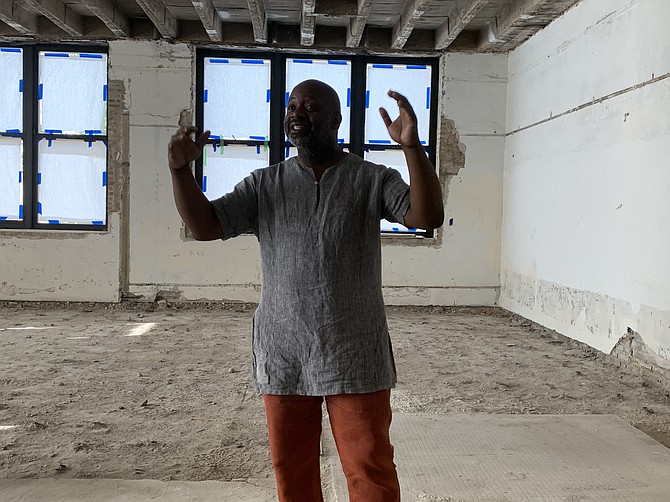Artist transforming shuttered school into creative incubator
By Tia Carol Jones
Artists are known for taking elements and transforming them into something beautiful. That’s exactly what artist Theaster Gates and Rebuild Foundation are doing with a shuttered elementary school on the South Side, by turning it into a creative incubator.
Tentatively named St. Laurence Arts & Industry, the space is 40,000 square feet. It will be dedicated to developing the talent of Black and Brown people, with the hope they can do more for themselves and the world. Gates estimated it will cost $7.5 million.
St. Laurence Elementary School, located at 72nd and Dorchester, was going to be torn down and turned into a parking lot for Eden Supportive Living South Shore. The assisted living facility is located at the site where St. Laurence Church once stood. Both the church and the school were closed by the Archdiocese of Chicago in the early 2000s. In 2014, demolition of the church began to make way for Eden.
“It was a beautiful Catholic Church in the neighborhood, like one of the old grand Catholic churches and we couldn’t get to it fast enough,” Gates said. In 2015, Rebuild and Gates Studios created workforce crews that salvaged the brick, the altar, as well as the statute of St. Laurence. Those items served as training components for people to learn how to pull mortar off bricks and palletize bricks. It became a local economy. It also meant Gates had raw material to use in other buildings and works of art.
“Then, when we found out they were going to tear down the building, we thought this school could be the first moment where I could start to realize some of the other things, I wished I had as an emerging artist. I could start to realize for other artists,” Gates said.
Before this none of the other spaces Gates created had been made for other artists to create. He was making spaces for him to create, spaces for people to live, and spaces for archives and public gatherings.
“This idea of Arts & Industry is us trying to marry the truth that some artists will have lucrative careers as artists and sometimes we have to also do other things in order to make ends meet, in order to have the lives we want,” Gates said.
Another facet of the creative incubator will help people grow their business infrastructure by providing a legal team, an accounting team, as well as a formal legally-recognized entity, LLC. Those people will be able to build capacity when they go out into the world, to make them more fit for work.
The plaster ceiling has been torn out and the concrete ceiling remains. The building has been stripped back but the bones remain. There are ample hallways, once used as students passed through them, but once finished, it will be used for big loads and can accommodate lots of activity.
“There is life in these old architectural remnants. The buildings were made to live for hundreds of years and they can also absorb new uses besides what they formerly were,” Gates said. “We’re excited that a school is actually the best kind of building.”

